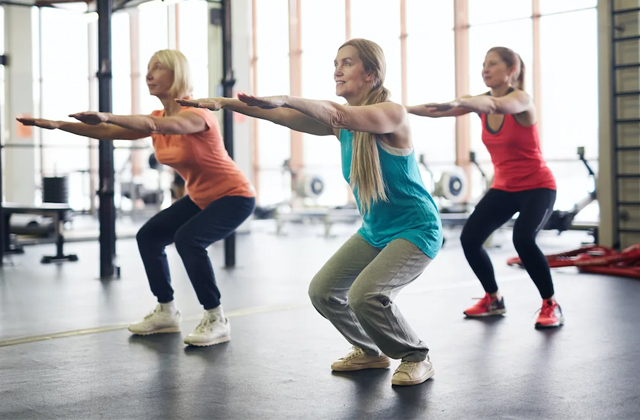A feeling of nausea in the midst of your workout can sometimes be a contributing factor to the whole exercise session. Do not panic, exercise-induced nausea is normally harmless and doesn’t necessitate extreme measures. Here’s how to strike back and save your training or at least prevent another such situation.
Immediate Action: Addressing Nausea
The first rule of exercise-induced nausea: listen to your body. Doing very hard exercise can make symptoms worse, even dehydration or injury. First, lower the intensity right away. Switch that high-impact run to a walk, lower the weights, or move to a lower impact activity like yoga or swimming.
Next, it is time to calm the stomach and the mind. Deep breathing is your hidden advantage. Concentrate on deep, calm breaths in your nose and out your mouth. This technique, which is quite straightforward, can put your stomach in order and lower your heart rate, which is a key factor for your sickness.
Dehydration is a major perpetrator of nausea during the workout. Rather than letting thirst sneak up on you, sip water little by little during your exercise. If nausea hits, drink water or a sports drink that contains electrolytes for lost sweat, especially in the heat.
Take a Break for Your Digestive System
Sugary drinks and processed snacks might look adorable, yet they can worsen the condition. In case you require something, make sure it is easily digestible. Choose wholemeal crackers, bananas, or ginger, which has a natural antiemetic property.
Effective Cool Down
Don’t give up in the middle of the exercise; you’ll end up dizzy and with prolonged nausea. Allocate 5-10 minutes to a cool-down that includes light activity such as walking or gentle stretching. This aids the body to ease into its resting state gradually and prevents blood from pooling, another possible cause of dizziness.
Preventative Measures: Be a Nausea Detective
After you’ve recovered, try to figure out what caused your nausea. Here’s where you become a detective:
Food Choices: Did you have a hearty meal just before your workout? Experts suggest that one needs to wait approximately 2-3 hours after a major meal prior to exercise. If you need a pre-workout snack, choose something light and easy to digest, such as a banana or toast with nut butter.
Hydration: Did you drink enough water before, during, and after your training session? Dehydration can be a very stealthy miscreant. Strive to drink enough water daily and practice taking sips frequently without waiting until you start feeling thirsty. A good way to start would be to buy a reusable water bottle that you can always have with you while working out.
Exercise Intensity: Had you suddenly started a workout that was much more intense than you are used to? The intensity and duration of your workouts must be built gradually so that the body can adapt accordingly. If this is your first time exercising, do some brisk walking or swimming, and then add difficulty gradually as your fitness level improves.
External Factors: Was the climate too hot or humid? Working out in hot or humid environments may increase your risk of nausea. Try to time your workouts in times of cool climate or have them in air-conditioned spaces. In order to mitigate the negative effects of exercising outside, plan your workout for cooler times of the day, wear loose, breathable clothing, and take breaks in the shade. Identifying the root cause of the problem will help you to solve the problem permanently.
In case the problems keep popping up, seek professional help.
If nausea and vomiting become familiar during exercise, it is advisable to consult a doctor. They will be in the position to identify any underlying medical conditions and offer individual recommendations on how to tailor exercises to minimize nausea.
This can be done by modifying your exercise routine, creating your hydration schedule, and researching any potential dietary triggers that could be intolerance’s or allergies.
Bonus Tips for Long-term Success
Proper Warm Up : Warm-up means that you are preparing your body for exercise and good circulation, which allows you to prevent nausea. Hit 5-10 minutes of light cardio and dynamic stretches prior to your exercise routine.
Listen to Your Body: Don’t hesitate to rest! If you start having nausea, slow down or take a break. It is better to act in response to your body signals than overdoing it by forcing yourself to vomit.
Gradually Increase Intensity: The intensity and duration of training should be increased gradually during the initial stages and at regular intervals so as to adapt your body accordingly. This will assist you in preventing over-exertion, a usual cause of nausea.
Find an Exercise Buddy: Working out with a friend or a group can make workouts more entertaining and keep you on track. Additionally, having a workout buddy makes it possible to encourage each other and also ensures accountability.
Take a break! Tune in to your body, adapt your exercise program, and pay attention to how you feel. You can always continue exercise when your health condition is better. Implementing the following tactics and a bit of sleuthing will help you to make exercise pleasant and nausea-free.


